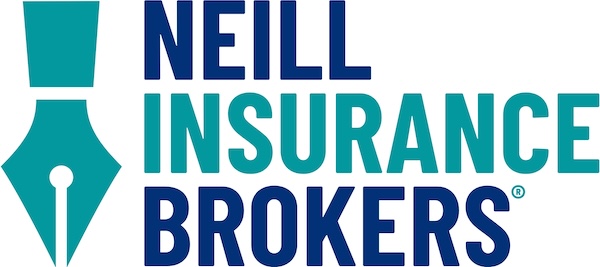
Insurance is one of the most important financial decisions most people make. But if you’ve ever tried to choose between a large, national brand like State Farm and a local independent broker like Neill Insurance, you know how confusing the process can feel.
Both options promise protection and peace of mind, but they offer very different experiences. Some buyers are drawn to the familiarity and scale of a well-known name like State Farm. Others prefer the personal attention and customized solutions they get from an independent broker.
This article lays out the differences clearly, so you can better understand how each approach works. Whether you’re insuring your home, car, business, or life, knowing what sets these options apart can help you make the decision that fits your unique needs.
How State Farm and Independent Brokers Operate Differently
At first glance, insurance providers may seem similar. But the business model behind each company shapes your experience more than most people realize.
State Farm: A Direct Carrier
State Farm is what’s known as a direct insurance carrier. That means they create the insurance products, handle underwriting, and sell the policies—all under their own brand. Their agents work exclusively for State Farm, so when you speak to a State Farm agent, you’ll only hear about State Farm products.
For many people, this feels simple and straightforward. State Farm has been in business for over 100 years, serves over 91 million policies, and has 19,000 agents across the country. Their agents are trained specifically on State Farm’s offerings, which ensures consistency nationwide.
Independent Brokers: Flexible and Personalized
Independent brokers operate under a completely different model. Instead of selling just one company’s policies, they partner with multiple insurance carriers. For example, Neill Insurance works with over 40 providers and is licensed in Texas as well as 18 other states.
This gives independent brokers the ability to:
- Shop the market to find the right carrier for each situation
- Customize coverage to meet specific needs
- Pivot between carriers if one changes pricing or coverage terms
For customers with complex needs—like non-standard homes, challenging driving histories, or specialized businesses—an independent broker often provides access to options that wouldn’t be available through a single-carrier model.
Comparing Product Offerings
Both State Farm and independent brokers cover the basics, but they differ in breadth and flexibility.
State Farm’s One-Stop Shop
State Farm provides a wide range of insurance and financial products, including:
- Auto insurance (personal and commercial)
- Homeowners, condo, renters, and landlord property insurance
- Life insurance (term, whole, universal)
- Business insurance packages
- Health-related coverage like Medicare supplements and disability insurance
- Financial services such as banking, retirement planning, and investments
Bundling these products can lead to discounts—sometimes up to $1,356 per year.
Independent Brokers’ Custom Coverage
Independent brokers focus on core insurance categories but have more flexibility within each:
- Auto and commercial auto insurance
- Homeowners, landlord, and property insurance
- RV, boat, and motorcycle coverage
- Business liability and contractors insurance
- Umbrella policies for additional liability
- Life insurance and workers’ compensation
Since independent brokers work with multiple carriers, they can shop for coverage that fits unique needs—such as insuring a property in a high-risk area or finding specialized business coverage.
How Each Company Prices Insurance
Pricing is one of the biggest factors in insurance decisions, but the way companies set prices varies.
State Farm’s Proprietary Pricing
State Farm uses its own algorithms and tools to assess risk and set pricing. Their model includes:
- Multi-policy bundle discounts
- Safe driver and usage-based programs
- Good student discounts
- Loyalty savings for long-term customers
Because State Farm is a captive carrier, you’re only shown their products and rates—not competitor comparisons.
Independent Brokers’ Comparison Shopping
Independent brokers don’t set pricing themselves. Instead, they compare rates from multiple carriers to find the most competitive option. For example, Neill Insurance typically shops more than 40 carriers, resulting in:
- Access to carriers specializing in specific risk types
- Custom coverage packages that avoid unnecessary costs
- Average client savings of more than 20% compared to previous policies
This approach often saves clients money while tailoring coverage to their specific needs.
Customer Experience: Standardization vs Personalization
State Farm’s Standardized Process
With its size and national footprint, State Farm offers a consistent experience:
- In-person service through 19,000 agents
- 24/7 customer support via phone, online, and mobile app
- Digital tools for claims, payments, and policy management
State Farm’s mobile app is highly rated (4.8/5 stars from over 1 million reviews) and offers convenience for those who prefer self-service.
Independent Brokers’ Personalized Service
Independent brokers focus on relationships, not transactions. Neill Insurance, for example, emphasizes:
- Direct access to senior advisors
- Personalized policy reviews and proactive communication
- Guidance through coverage changes or claims
- Local knowledge combined with multi-state licensing for broader service
Neill Insurance maintains a 91.4% client retention rate—well above industry averages—because clients value the human connection and tailored advice.
Technology and Tools
Both models use technology but for different purposes.
State Farm’s Digital Infrastructure
State Farm has invested heavily in digital self-service tools, including:
- Digital ID cards
- Claims filing with photo uploads
- Usage-based driving apps for safe-driver discounts
- AI-powered customer service chatbots
This technology appeals to those who prefer fast, self-managed insurance interactions.
Independent Brokers’ Tech-Enabled Advice
Independent brokers use technology to support—not replace—human interactions. Tools include:
- Carrier quoting platforms for side-by-side price comparisons
- CRM systems to manage ongoing client relationships
- Online scheduling and communication systems
The technology makes it easier to deliver personalized service while maintaining efficiency.
Geographic Reach and Accessibility
State Farm: Nationwide Presence
- Licensed in all 50 states
- Local agents across the country
- Seamless policy transfers between states
- Disaster response capabilities for large-scale events
Independent Brokers: Regional Focus with Multi-State Licensing
- Neill Insurance serves Texas and 18 other states
- Deep expertise in Texas-specific risks like hailstorms, floods, and regional property challenges
- Personalized service with broader reach for clients with multi-state needs
Financial Strength and Stability
Insurance isn’t just about price—it’s about knowing claims will be paid when it matters. Recent events have raised questions about how some companies handle this responsibility.
State Farm’s Recent Challenges
In 2024, State Farm faced investigations by the California Department of Insurance regarding how wildfire claims were handled. Policyholders reported delays, denials, and disputes over smoke damage and property loss. This led to state-level scrutiny of claims processes.
Additionally, State Farm’s California subsidiary, State Farm General, was downgraded by A.M. Best from “A” (Excellent) to “B” (Fair) in early 2024. The issuer credit rating was also reduced, citing poor financial surplus management and catastrophe exposure.
Although the downgrade was technically specific to California, experts note that performance issues in one large market can bleed into other states. Increased reinsurance costs, catastrophic loss exposure, and rate pressures affect company-wide operations—including in Texas.
Independent Brokers: Spreading Risk Across Carriers
Independent brokers don’t rely on the financial health of just one carrier. They work with multiple A-rated insurers, reducing the risk of disruptions due to a single company’s financial problems. If one carrier struggles, a broker can pivot to another—offering clients continued protection without gaps.
Summary of Key Differences
| Feature | State Farm | Independent Broker (Your Agency) |
| Business Model | Captive, single-carrier | Shop across 40+ carriers |
| Product Scope | Full insurance & financial suite | Core policies with tailored flexibility |
| Pricing Approach | Set by State Farm | Competitive, custom carrier selection |
| Customer Experience | Standardized, national | Personalized, advisor-led |
| Technology | High-tech self-service tools | Tech-supported human experience |
| Geographic Reach | All 50 states | Texas + 18 additional licensed states |
| Financial Stability | Recent downgrade in California; wildfire claims scrutiny | Diversified carriers reduce risk |
Next Steps
Once you understand the differences between these two approaches, the next logical step is to see how the options compare for your specific situation. The easiest way to do that is to get a quote and review the actual numbers side by side.

